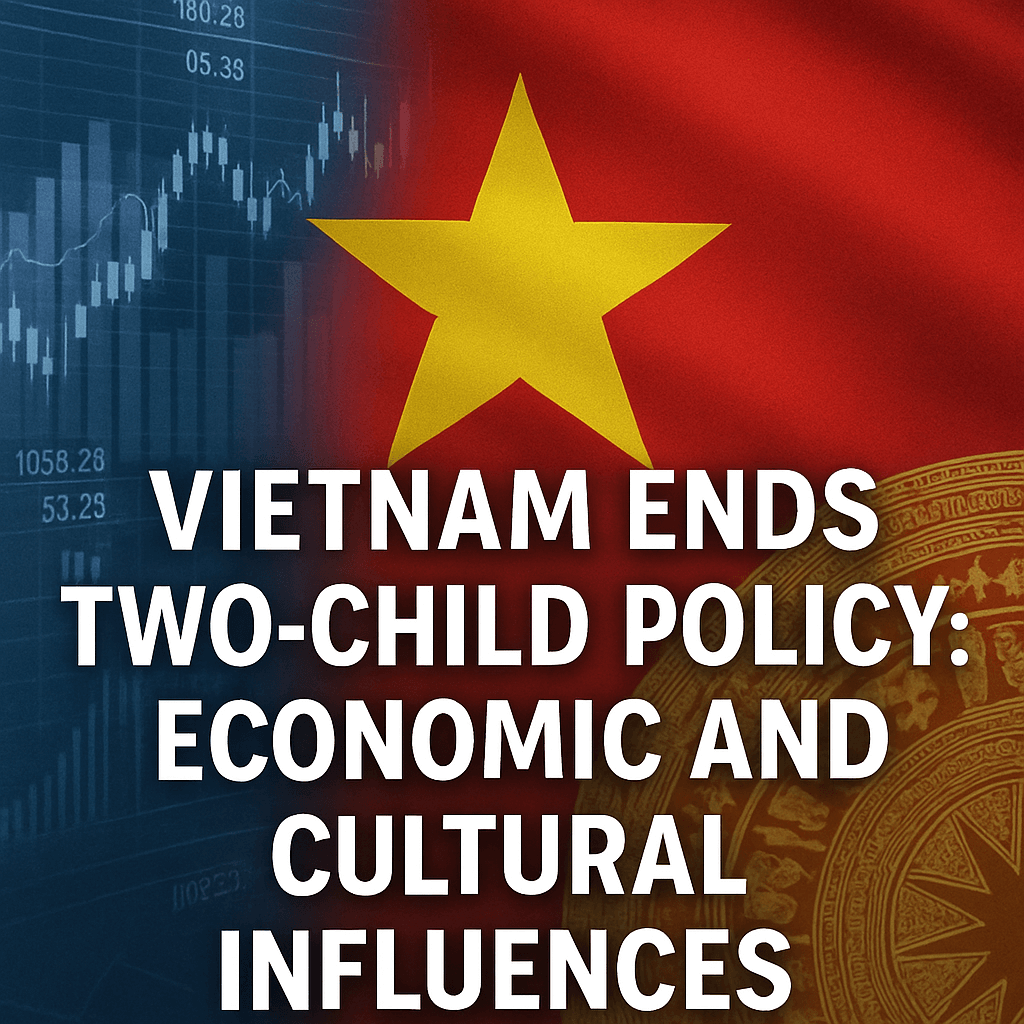Vietnam Ends Two-Child Policy: Economic and Cultural Influences

With the lifting of its long-standing two-child policy, the Vietnamese government aims to address declining birth rates and an ageing population. On Wednesday, this policy change was officially announced, heralding a potential shift in family dynamics as the nation seeks to encourage higher birth rates. However, many Vietnamese citizens express significant hesitations about expanding their families, suggesting that economic realities and evolving social values may dampen the government’s ambitions.
Policy Background and Context
First introduced in 1988, the two-child limit was a key element of Vietnam’s family planning strategy, aimed at controlling rapid population growth. Although the policy was loosely enforced in recent years, it has left a lasting imprint on societal norms regarding family size. Vietnam’s total fertility rate declined to a historic low of 1.91 children per woman in 2024, dipping below the replacement level of 2.1. While urban centers such as Hanoi and Ho Chi Minh City exhibit the most pronounced declines, rural citizens voice similar preferences for smaller families.
Individual Perspectives on Family Size
Pharmacy worker Nguyen Thi Nguyet Nga, 31, is representative of many Vietnamese adults. She articulated her concerns about potential additional financial burdens associated with having a third child. With a monthly income of around $300, she struggles to provide for her two daughters, aged seven and 12, who reside with their grandparents 40 kilometers away. Nga relies on video calls to stay connected with her children, a stark reminder of the workforce’s demands and the implications for family life.
“I don’t earn enough for the two girls to have a good life. I don’t have a chance to live with them every day,” said Nga.
Similar sentiments were echoed by university student Nguyen Thi Kim Chi, 18, who articulated a shifting perspective among Vietnam’s youth. Chi’s commitment to establishing career stability before starting a family exemplifies a broader trend toward prioritizing personal ambitions over traditional family structures.
Implications of Economic Conditions
The rising cost of living in Vietnam has compounded the challenges of parenthood. Essential expenses, including housing, utilities, healthcare, and education, are escalating, creating significant pressure on household budgets, especially for urban families. Current economic indicators suggest that many families, particularly in cities, may find their incomes insufficient to cover basic needs.
- Housing prices have surged in metropolitan regions, with an average increase of over 30% in urban real estate markets.
- Utilities costs have risen alongside inflation, affecting disposable income, which is essential for increasing family size.
- Education expenses are notably high, with families often spending significant portions of their income on private tuition and extracurricular activities.
The United Nations Population Fund has expressed cautious optimism regarding Vietnam’s policy shift, urging the government to establish comprehensive support systems that can alleviate the burdens of starting a family. This includes improving access to childcare services and fostering gender equality in the workplace.
Long-Term Cultural Changes
As societal values evolve, the notion of family and child-rearing is also shifting. Tran Thi Thu Trang, a 30-year-old office worker from Haiphong, noted the difficulties her family faces following the birth of her third child. She indicated that while she is fortunate to afford childcare, many others may not have that luxury. Their sentiments highlight the critical need for systemic support in areas such as healthcare and education.
“I think it will take 5-10 years for people to change their views,” she stated. “But only if the government makes this a priority.”
The Way Forward
The lifting of the two-child limit marks a significant turning point for familial policies in Vietnam. Yet, to realize the intended demographic shift, the government must also confront underlying economic and cultural challenges. Analysts suggest that without adequate support infrastructure—such as improved economic conditions, healthcare access, and educational support—the reality of family expansion may remain a distant aspiration for many Vietnamese citizens.
Conclusion
Ultimately, while the Vietnamese government’s removal of the two-child policy signals a willingness to adapt to demographic challenges, the response from citizens indicates that deeper changes are needed. Engaging with the economic landscape and cultural shifts may hold the key to encouraging families to grow in a rapidly changing Vietnam.